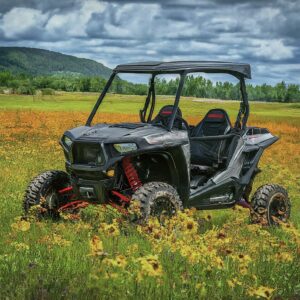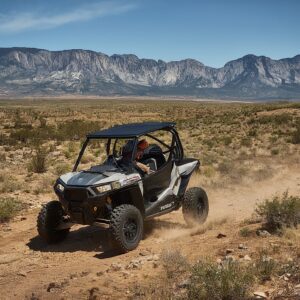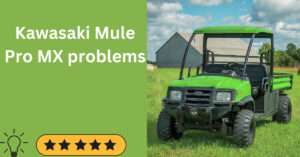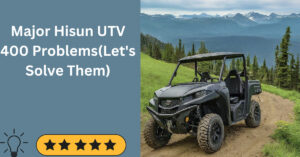A UTV, or Utility Task Vehicle, is a versatile off-road vehicle designed for various outdoor activities. UTVs are built to handle tough terrains and offer practicality for both work and recreation. Let’s delve into the key features and uses of UTVs.
What is an UTVs

A UTV (Utility Task Vehicle), also known as a side-by-side vehicle (SxS), is a small off-road vehicle designed for various purposes. Here are the key details:
- Definition: A UTV typically has four or more wheels and can seat two or more people.
- Functionality:
- Utility: UTVs are used for both work and recreation.
- Cargo Area: They often have a cargo bed for carrying materials, equipment, or other items.
Safety Features:
UTVs come equipped with seat belts and a rollover cage for added safety.
Variety:
UTVs can be categorized into three main types:
- Sport UTVs: Designed for fun, including high-speed trails, sand dunes, and racing.
- Utility UTVs: Primarily used for work tasks, commonly found on farms or job sites.
- Sport-Utility UTVs: Bridge the gap between sport and utility, suitable for trails, towing, property maintenance, and hauling.
11 Model of UTVs

Let’s check out some popular brands of UTVs (Utility Task Vehicles) that have made a mark in off-road adventures:
1. Polaris:
- Start: Founded in 1954 in Minnesota, United States.
- Ranger Series: Includes models like Ranger 500, Ranger 570, and Ranger XP 1000.
- General Series: Features General 1000 and General XP 1000.
- RZR Series: Known for sporty performance, with models like RZR Trail 570.
- Cost Range: Polaris UTVs fit different budgets.
Also read 10 UTV brands to stay away from (2024)
2. Yamaha:
- Reliability: Yamaha UTVs are dependable and versatile.
- Yamaha Wolverine: A compact UTV for trails and work.
- Yamaha Viking: Designed for utility and comfort.
3. Arctic Cat:
- Background: Established in 1960 with a rich history.
- Product Range: Specializes in UTVs, with facilities in Thief River Falls, Minnesota.
- Arctic Cat Prowler Pro: Versatile for work and play, suitable for farm tasks, snow removal, or hunting.
- Arctic Cat Wildcat XX: High-performance for thrilling trail rides.
4. Can-Am:
- Innovation: Known for pushing limits with innovative features.
- Maverick Series: Sporty UTVs.
- Defender Series: Focuses on utility and work.
- Notable Models: Can-Am Maverick X3 and Can-Am Defender HD10.
5. Honda:
Quality and Durability: Honda UTVs are known for their strong build.
Popular Models:
- Honda Pioneer: Various models for different needs.
- Honda Talon: Recognized for sporty performance.
6. Textron Off Road Wildcat
- Stands out with its bold design and performance-oriented features.
- Geared towards those who enjoy aggressive off-road riding.
- Features advanced suspension systems for a smooth ride.
7. Kawasaki Teryx
- Known for its sporty and compact design.
- Offers a comfortable interior with seating for two or four.
- Suitable for both recreational riding and light utility tasks.
9. CFMOTO ZForce
- Gaining popularity for its sporty design and affordable pricing.
- Features models with various engine sizes to cater to different preferences.
- Designed for those who enjoy a mix of work and off-road play.
10. John Deere UTV Models:
- Gator XUV835M: This three-passenger UTV offers a comfortable ride and is equipped with features like LED headlights, high-sided doors, and a winch towing capacity of up to 3,500 lbs1.
- Gator XUV590M: A versatile mid-size UTV with a cargo capacity of up to 500 lbs, 4WD, and independent suspension2.
11. Cub Cadet UTV Models:
- Challenger M550: Priced at $10,999, this UTV offers a 546 cc 4-stroke engine, efficient electronic fuel injection, and a towing capacity of 1,200 lbs3.
- Challenger MX750 EPS Camo: Priced at $15,499, this UTV features a powerful 735 cc 4-stroke engine, a 3,500 lbs winch towing capacity, and electronic fuel injection
Also read What is John Deere and It’s All Models
Common Uses of UTVs
UTVs (Utility Task Vehicles) are incredibly versatile and find applications in various aspects of work and recreation. Here are some common uses of UTVs:
1. Cleaning Your Yard:
- Load up fallen branches, sticks, and leaves in the UTV bed to clear your yard efficiently.
- UTVs make yard work less of a chore and more enjoyable.
2. Hunting:
- UTVs take you deep into remote areas where your feet can’t reach.
- They make field dressing and hauling game easier, especially when equipped with cargo space.
3. Mowing:
- Tow-behind mowers can turn your UTV into a practical lawn care tool.
- Ideal for maintaining large yards or fields.
4. Checking Fences:
- UTVs are excellent for inspecting fences on large properties.
- They handle uneven terrain and carry tools, spare posts, and wire for quick repairs.
5. Livestock Management:
- UTVs help check and move livestock across diverse terrain.
- Intact fences are crucial for keeping livestock where they should be.
6. Recreation and Fun:
- UTVs are perfect for off-road adventures, trail riding, and exploring.
- Take them camping, fishing, or just enjoy the thrill of riding.
6 Common problems that UTVs
Let’s explore some common problems that UTVs (Utility Task Vehicles) can encounter and potential fixes for them:
1. Frozen Throttle Cable:
- Issue: The throttle cable can retain moisture and freeze in low temperatures, causing a stuck throttle and potentially compromising brake function.
- Fix: If you own an affected UTV, contact an authorized dealer to have the throttle cable upgraded free of charge. Regular service is essential to prevent such issues.
2. Excessive Cab and Seat Heat:
- Issue: Heat from the radiator venting under the dash can make the cabin uncomfortably warm. Engine heat can also warm the seats excessively.
- Fix: Consider adding insulation or heat shields to redirect radiator heat away from the cabin. Seat covers or cushions can help manage seat warmth.
3. Transmission Issues:
- Symptoms: Sluggish gear shifting, especially in cold weather.
- Fix: Maintain proper transmission fluid levels. Ensure the UTV idles for short bursts to prevent fluid breakdown.
4. Brake Lock-Up:
- Causes: Wrong brake fluid, overheating, broken parking brake, or damaged brake components.
- Fix: Check the parking brake setting, inspect brake discs, and replace stuck calipers or damaged parts.
5. Diminished Brake Performance:
- Symptoms: Unresponsive brakes or sinking brake pedal.
- Fix: Inspect brake pads, hydraulic cylinders, and ensure proper brake fluid levels.
6. Front and Rear Wheel Shaking:
- Cause: Misaligned or unbalanced wheels.
- Fix: Visit a repair shop to realign and balance the wheels.
Key Differences Between UTVs and ATVs
While both UTVs and ATVs are off-road vehicles, they have distinct characteristics that cater to different needs. Here’s a breakdown of their key differences:
1. Seating and Passenger Capacity:
- UTV (Utility Terrain Vehicle): Designed to seat multiple passengers (typically 2-4) side-by-side, offering a car-like experience.
- ATV (All-Terrain Vehicle): Primarily designed for single riders, although some models offer limited passenger seating.
2. Steering:
- UTV: Utilizes a steering wheel for control, similar to a car.
- ATV: Employs handlebars for steering, similar to a motorcycle.
3. Purpose and Functionality:
- UTV: If we see that UTV primarily focused on utility tasks like hauling cargo, farm work, and off-road transportation. However, they can also be used for recreational activities like trail riding.
- ATV: It’s primarily intended for recreational purposes like off-road exploration, trail riding, and experiencing the thrill of manoeuvring challenging terrain. While some ATVs can handle light hauling, their cargo capacity is generally limited compared to UTVs.
4. Safety Features:
- UTV: Often equipped with safety features like seat belts, roll cages, and wind shields, offering a more enclosed and potentially safer environment for passengers.
- ATV: Generally lacks advanced safety features, relying on operator skill and awareness for safe riding.
5. Size and Manoeuvrability:
- UTV: Larger and heavier than ATVs, making them less nimble but offering better stability and cargo space.
- ATV: Smaller and lighter, offering greater manoeuvrability and agility in tight spaces.
6. Overall:
- UTV: Ideal for tasks requiring multiple passengers, carrying cargo, and prioritizing safety in off-road environments.
- ATV: Perfect for solo riders who prioritize recreational thrills, agility in challenging terrain, and a more physical riding experience.
Also read ATV vs UTV difference
Conclusion
UTVs stand as versatile and robust vehicles, bridging the gap between work and recreation. With their multi-passenger capacity, cargo capabilities, and powerful engines, UTVs cater to a diverse range of outdoor activities. Brands like Polaris, Yamaha, Arctic Cat, Can-Am, and Honda contribute to this dynamic market, offering innovative models that suit various needs.








